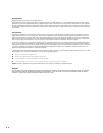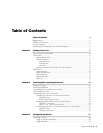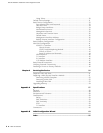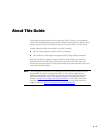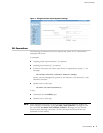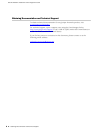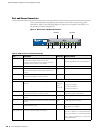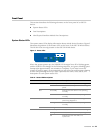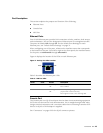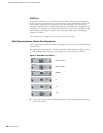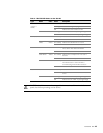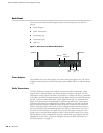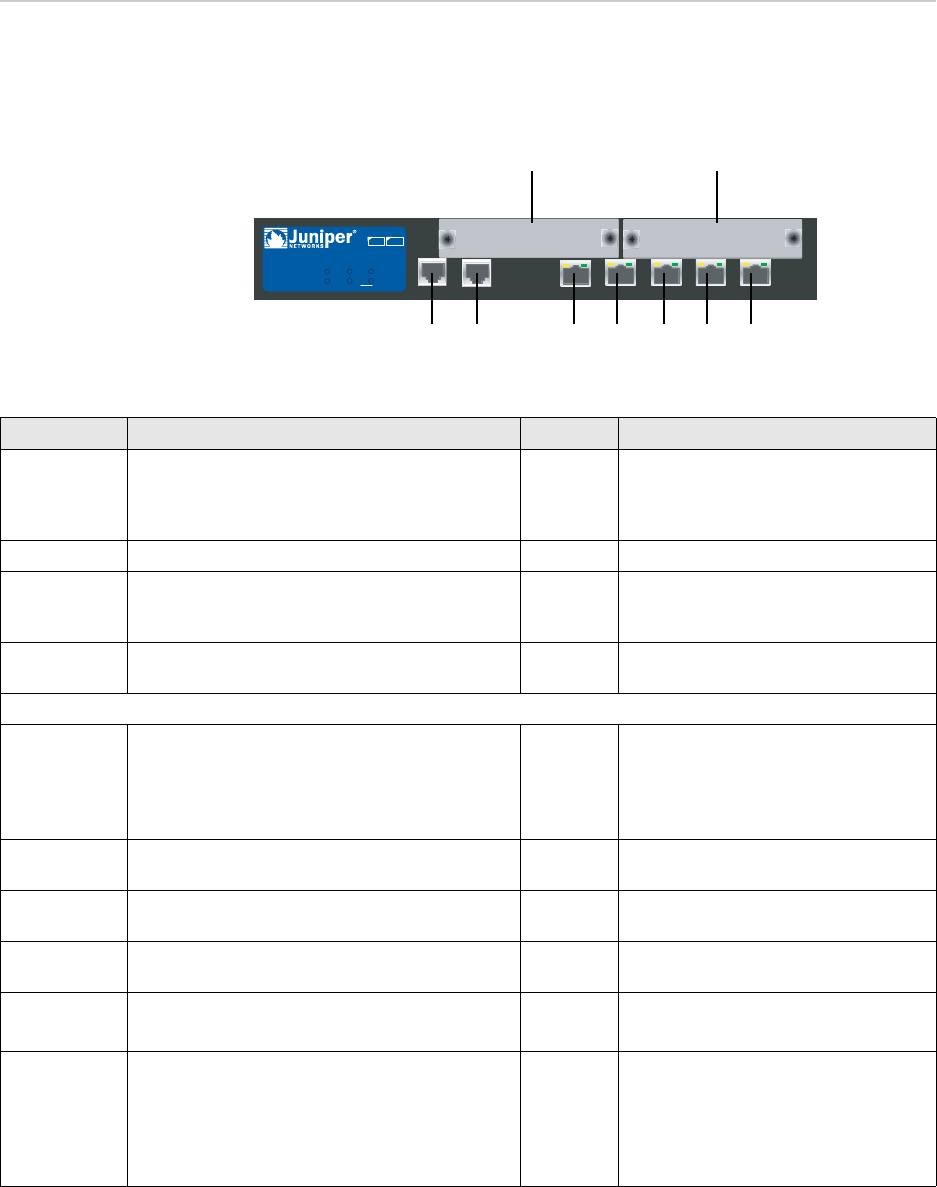
SSG 20 Hardware Installation and Configuration Guide
10 Port and Power Connectors
Port and Power Connectors
This section describes and displays the location of the built-in ports and power
connectors. Refer to the following figure for built-in port locations and Table 1 for
the power connector descriptions.
Figure 2: Built-in Port and Mini-PIM Location
Table 1: SSG 20 Ports and Power Connectors
AUX
0/0
10 /100
AUX
0/0
10/100
0/0
10/100
0/0
10/ 100
0/0
10 /100
LINK
STATUS
POWER
PIM 2
PIM 1
b/g
802.11a
WLAN
SSG 20
12
Mini-PIM 2Mini-PIM 1
AUX Console 0/0 0/1 0/2 0/3 0/4
Port Description Connector Speed/Protocol
0/0-0/4 Enables direct connections to workstations or a LAN
connection through a switch or hub. This
connection also allows you to manage the device
through a Telnet session or the WebUI.
RJ-45 10/100 Mbps Ethernet
Autosensing duplex and auto MDI/MDIX
USB Enables a 1.1 USB connection with the system. N/A 12M (full speed) or 1.5M (low speed)
Console Enables a serial connection with the system. Used
for terminal-emulation connectivity to launch CLI
sessions.
RJ-45 9600 bps/RS-232C serial
AUX Enables a backup RS-232 async serial Internet
connection through an external modem.
RJ-45 9600 bps — 115 Kbps/RS-232C serial
Mini PIM
ADSL 2/2+ Enables an Internet connection through an ADSL
data link.
RJ-11
(Annex A)
RJ-45
(Annex B)
ANSI T1.413 Issue 2 (Annex A only)
ITU G.992.1 (G.dmt)
ITU G.992.3 (ADSL2)
ITU G.992.5 (ADSL2+)
V.92 Modem Enables a primary or backup Internet or untrusted
network connection to a service provider.
RJ-11 9600 bps — 115 Kbps/RS-232 serial
autosensing duplex and polarity
T1 Enables a connection to the T1 line to the untrusted
network.
RJ-45 1.544 Mbps (full-time slots)
E1 Enables a connection to the E1 line to the untrusted
network.
RJ-45 2.048 Mbps (full-time slots)
ISDN Enables the ISDN line to be used as the untrust or
backup interface. (S/T)
RJ-45 B-channels at 64 Kbps
Leased line at 128 Kbps
Antenna A & B
(SSG 20-WLAN)
Enables a direct connection to workstations in the
vicinity of a wireless radio connection.
RPSMA 802.11a (54 Mbps on 5GHz radio band)
802.11b (11 Mbps on 2.4 GHz radio band)
802.11g (54 Mbps on 2.4 GHz radio band)
802.11 superG (108 Mbps on 2.4 GHz and
5GHz radio bands)



